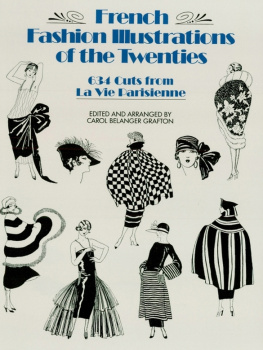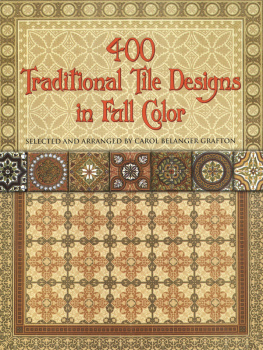TREASURY OF
ANIMAL
ILLUSTRATIONS
From Eighteenth-Century Sources EDITED BY Carol Belanger Grafton

Dover Publications, Inc. New York Copyright 1988 by Dover Publications, Inc. All rights reserved under Pan American and International Copyright Conventions.
Treasury of Animal Illustrations: From Eighteenth-Century Sources is a new selection of plates from French natural-history publications. The original French engraved labeling has been deleted, and new English captions, publisher's note and index provided. See Publisher's Note for further details.
DOVER Pietorial Archtve SERIES This book belongs to the Dover Pictorial Archive Series. You may use the designs and illustrations for graphics and crafts applications, free and without special permission, provided that you include no more than ten in the same publication or project. (For permission for additional use, please write to Dover Publications, Inc., 31 East 2nd Street, Mineola, N.Y. 11501.) However, republication or reproduction of any illustration by any other graphic service, whether it be in a book or in any other design resource, is strictly prohibited. Manufactured in the United States of America Dover Publications, Inc., 31 East 2nd Street, Mineola, N.Y. p. cm.(Dover pictorial archive series) A new selection of plates from French natural-history publicationsT.p. verso. verso.
Includes index. ISBN 0-486-25805-X (pbk.) 1. Decoration and ornamentAnimal formsFrance. 2. Decoration and ornamentFranceHistory18th century. I.
Graf-ton, Carol Belanger. II. Series. NK1449.A1T7 1988
PUBLISHERS NOTE
Eighteenth-century natural-history illustration in France received tremendous impetus from the researches and writings of men like Buffon and Bonnaterre, who, together with colleagues (and then posthumous continuators), produced massive illustrated publications that were decades in the making, extending into the early nineteenth century. The numerous artists employed either in drawing the images or engraving the images onto copper plates for the printer, have left us an admirable legacy, of which the present volume offers a selection of outstanding examples. (At least some of the plates included here are from various volumes of Bonnaterre's
Tableau encyclopedique et methodique des trois regnes de la nature. It has not been possible to identify the source of all the plates or to name individual artists.) present a token sampling of the superb botanical illustration of the same period; included are chiefly blossoms and fruits of tropical trees, some of which are of international importance as food plants.
All original French lettering has been deleted from the plates, and new English captions substituted. The identifications of the animals (or plants) in the captions (common English names only) ranges from the extremely general (Crabs) to the extremely specific (viviparous eelpout). The possibilities of pinpointing species depended on the degree of recognizability of the images, the amount and quality of the identifications in the original French engraved labeling, and the degree of availability of reference resources. For most practical purposes, however, the extent of identification in the present volume should be sufficient. An index at the end of the book allows for speedy location of all identified animals (or plants). The more than 600 classic illustrations included here, carefully reproduced in fine line from the original engravings, and easily reproducible from the book with no significant loss in quality, are a unique blend of artistic elegance and scientific accuracy (except for a tiny handful of extravagancies, which have a wayward charm of their own).
They are certain to be of great use to artists, illustrators, designers, packagers and craftspeople in many fields, as well as to the many readers who enjoy leafing through fine illustrated works.  PLATE 1. Top: (left) sitatunga (or a related antelope), (right) blackbuck. Bottom: (left) lesser kudu (or a related antelope), (right) giraffe.
PLATE 1. Top: (left) sitatunga (or a related antelope), (right) blackbuck. Bottom: (left) lesser kudu (or a related antelope), (right) giraffe.  PLATE 2. Top: (left) elk (moose), (right) white-tailed deer (or a related deer).
PLATE 2. Top: (left) elk (moose), (right) white-tailed deer (or a related deer).
Bottom: doe (left) and stag (right) of the European red deer.  PLATE 3. Rabbits, wild (top) and domesticated (bottom).
PLATE 3. Rabbits, wild (top) and domesticated (bottom).  PLATE 4. Hares, including (bottom right) a nonexistent horned hare.
PLATE 4. Hares, including (bottom right) a nonexistent horned hare.  PLATE 5.
PLATE 5.
Top: two species of hyrax. Bottom: two species of porcupine.  PLATE 6. Top: (left) a species of porcupine, (right) paca. Bottom: (left) brush-tailed porcupine, (right) acouchi.
PLATE 6. Top: (left) a species of porcupine, (right) paca. Bottom: (left) brush-tailed porcupine, (right) acouchi.  PLATE 7.
PLATE 7.
Various gerbils and jerboas.  PLATE 8. Various species of dormouse.
PLATE 8. Various species of dormouse.  PLATE 9. Top to bottom: sable; polecat; ferret; marbled polecat.
PLATE 9. Top to bottom: sable; polecat; ferret; marbled polecat.  PLATE 10.
PLATE 10.
Top to bottom: animal of the raccoon family; coatimundi; suricate; a species of civet.  PLATE 11. Top to bottom: honey badger; Patagonian weasel; animal of the weasel family; lion.
PLATE 11. Top to bottom: honey badger; Patagonian weasel; animal of the weasel family; lion.  PLATE 12/13. Top: marmots and related rodents of the squirrel family. Center: lemmings; type of rodent; two species of rat.
PLATE 12/13. Top: marmots and related rodents of the squirrel family. Center: lemmings; type of rodent; two species of rat.
Bottom: Rodents (middle two are muskrat and wharf rat)  PLATE 14. Top to bottom: tiger; leopard; snow leopard.
PLATE 14. Top to bottom: tiger; leopard; snow leopard.  PLATE 15. Top to bottom: wildcat; house cat; Angora cat.
PLATE 15. Top to bottom: wildcat; house cat; Angora cat.  PLATE 16.
PLATE 16. 















 Dover Publications, Inc. New York Copyright 1988 by Dover Publications, Inc. All rights reserved under Pan American and International Copyright Conventions. Treasury of Animal Illustrations: From Eighteenth-Century Sources is a new selection of plates from French natural-history publications. The original French engraved labeling has been deleted, and new English captions, publisher's note and index provided. See Publisher's Note for further details.
Dover Publications, Inc. New York Copyright 1988 by Dover Publications, Inc. All rights reserved under Pan American and International Copyright Conventions. Treasury of Animal Illustrations: From Eighteenth-Century Sources is a new selection of plates from French natural-history publications. The original French engraved labeling has been deleted, and new English captions, publisher's note and index provided. See Publisher's Note for further details.  PLATE 1. Top: (left) sitatunga (or a related antelope), (right) blackbuck. Bottom: (left) lesser kudu (or a related antelope), (right) giraffe.
PLATE 1. Top: (left) sitatunga (or a related antelope), (right) blackbuck. Bottom: (left) lesser kudu (or a related antelope), (right) giraffe.  PLATE 2. Top: (left) elk (moose), (right) white-tailed deer (or a related deer).
PLATE 2. Top: (left) elk (moose), (right) white-tailed deer (or a related deer). PLATE 3. Rabbits, wild (top) and domesticated (bottom).
PLATE 3. Rabbits, wild (top) and domesticated (bottom).  PLATE 4. Hares, including (bottom right) a nonexistent horned hare.
PLATE 4. Hares, including (bottom right) a nonexistent horned hare.  PLATE 5.
PLATE 5. PLATE 6. Top: (left) a species of porcupine, (right) paca. Bottom: (left) brush-tailed porcupine, (right) acouchi.
PLATE 6. Top: (left) a species of porcupine, (right) paca. Bottom: (left) brush-tailed porcupine, (right) acouchi.  PLATE 7.
PLATE 7. PLATE 8. Various species of dormouse.
PLATE 8. Various species of dormouse.  PLATE 9. Top to bottom: sable; polecat; ferret; marbled polecat.
PLATE 9. Top to bottom: sable; polecat; ferret; marbled polecat.  PLATE 10.
PLATE 10. PLATE 11. Top to bottom: honey badger; Patagonian weasel; animal of the weasel family; lion.
PLATE 11. Top to bottom: honey badger; Patagonian weasel; animal of the weasel family; lion.  PLATE 12/13. Top: marmots and related rodents of the squirrel family. Center: lemmings; type of rodent; two species of rat.
PLATE 12/13. Top: marmots and related rodents of the squirrel family. Center: lemmings; type of rodent; two species of rat. PLATE 14. Top to bottom: tiger; leopard; snow leopard.
PLATE 14. Top to bottom: tiger; leopard; snow leopard.  PLATE 15. Top to bottom: wildcat; house cat; Angora cat.
PLATE 15. Top to bottom: wildcat; house cat; Angora cat.  PLATE 16.
PLATE 16. 